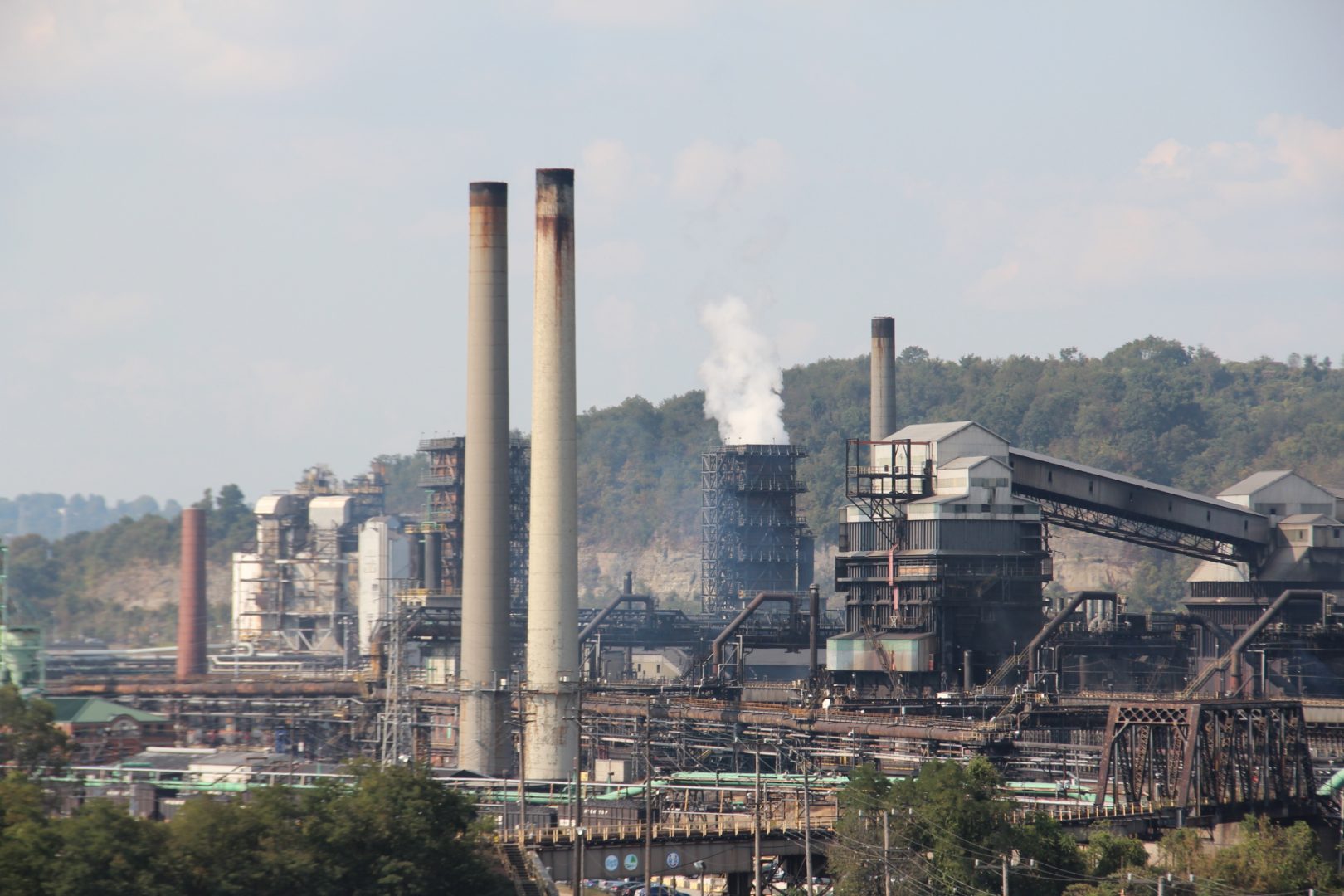
US Steel's Clairton Coke Works.
Reid Frazier / StateImpact Pennsylvania


US Steel's Clairton Coke Works.
Reid Frazier / StateImpact Pennsylvania

Reid Frazier / StateImpact Pennsylvania
US Steel's Clairton Coke Works.
Allegheny County is meeting federal air quality standards for the first time ever at all eight of its monitors, the county said.
Improved air quality levels measured in 2020 dropped the county’s most polluted monitor, near US Steel’s Clairton Coke Works, below the EPA’s threshhold for particulate matter, nitrogen oxide, sulfur oxides, carbon monoxide and ozone.
The numbers are from preliminary data the county is verifying to send to the EPA for certification.
The county’s numbers in several key pollutants — like fine particles and sulfur dioxide — improved substantially during 2020, when the pandemic caused a decline in motor vehicle traffic and demand from coal-fired power plants. But the county says the numbers would have met federal standards even without the pandemic, noting that air pollution fell without a significant decrease in industrial production.
“This achievement comes after years of hard work by the Health Department, federal and state agencies and local industry to clean up the air in Allegheny County,” said Health Department Director Dr. Debra Bogen, in a statement. “But we have more work to do, and the Health Department is committed to ensuring everyone in Allegheny County has clean air to breathe.”
The county credited more stringent rules, including a 2017 Notice of Violation against US Steel’s Edgar Thomson Works in Braddock that sought to clamp down on emissions, and a new policy that increased air pollution fines, for improved air quality.
The county’s improved numbers came despite an inversion season that caused Pittsburghers to wheeze through several days of bad air in late 2020 and a late 2018 fire at US Steel’s Clairton coke works that led to several air quality alerts and thousands of air quality complaints. The plant has been fined $5.5 million since 2015 for air quality violations, according to EPA data.
Zach Barber, the clean air advocate at PennEnvironment, said the new numbers showed the county as going in is showing progress. But he said the Clairton plant was still a large source of pollution, like benzene, a known carcinogen, and hydrogen sulfide.
“The health department has definitely stepped things up but to really tackle some of the worst and most toxic pollution that’s making people sick in the county, there’s a lot more work that needs to be done,” Barber said.
Barber added that the EPA’s pollution limits are too high, according to the agency’s own scientists. In December, the Trump Administration decided to keep its current standard for soot pollution at 12 micrograms per cubic meter, despite a finding by its own scientists that it should lower the limit to between 8 and 10 micrograms per cubic meter.
The county’s current three-year average of 11.2 micrograms per cubic meter of fine particles would not meet that standard, he said.
“Even at these limits, there are serious damages that can be done to human health. So I think there’s still a lot of work left to be done to really clean up and make sure that we’re not putting our health at risk just by breathing,” Barber said.
StateImpact Pennsylvania is a collaboration among WITF, WHYY, and the Allegheny Front. Reporters Reid Frazier, Rachel McDevitt and Susan Phillips cover the commonwealth’s energy economy. Read their reports on this site, and hear them on public radio stations across Pennsylvania.
(listed by story count)
StateImpact Pennsylvania is a collaboration among WITF, WHYY, and the Allegheny Front. Reporters Reid Frazier, Rachel McDevitt and Susan Phillips cover the commonwealth’s energy economy. Read their reports on this site, and hear them on public radio stations across Pennsylvania.
Climate Solutions, a collaboration of news organizations, educational institutions and a theater company, uses engagement, education and storytelling to help central Pennsylvanians toward climate change literacy, resilience and adaptation. Our work will amplify how people are finding solutions to the challenges presented by a warming world.